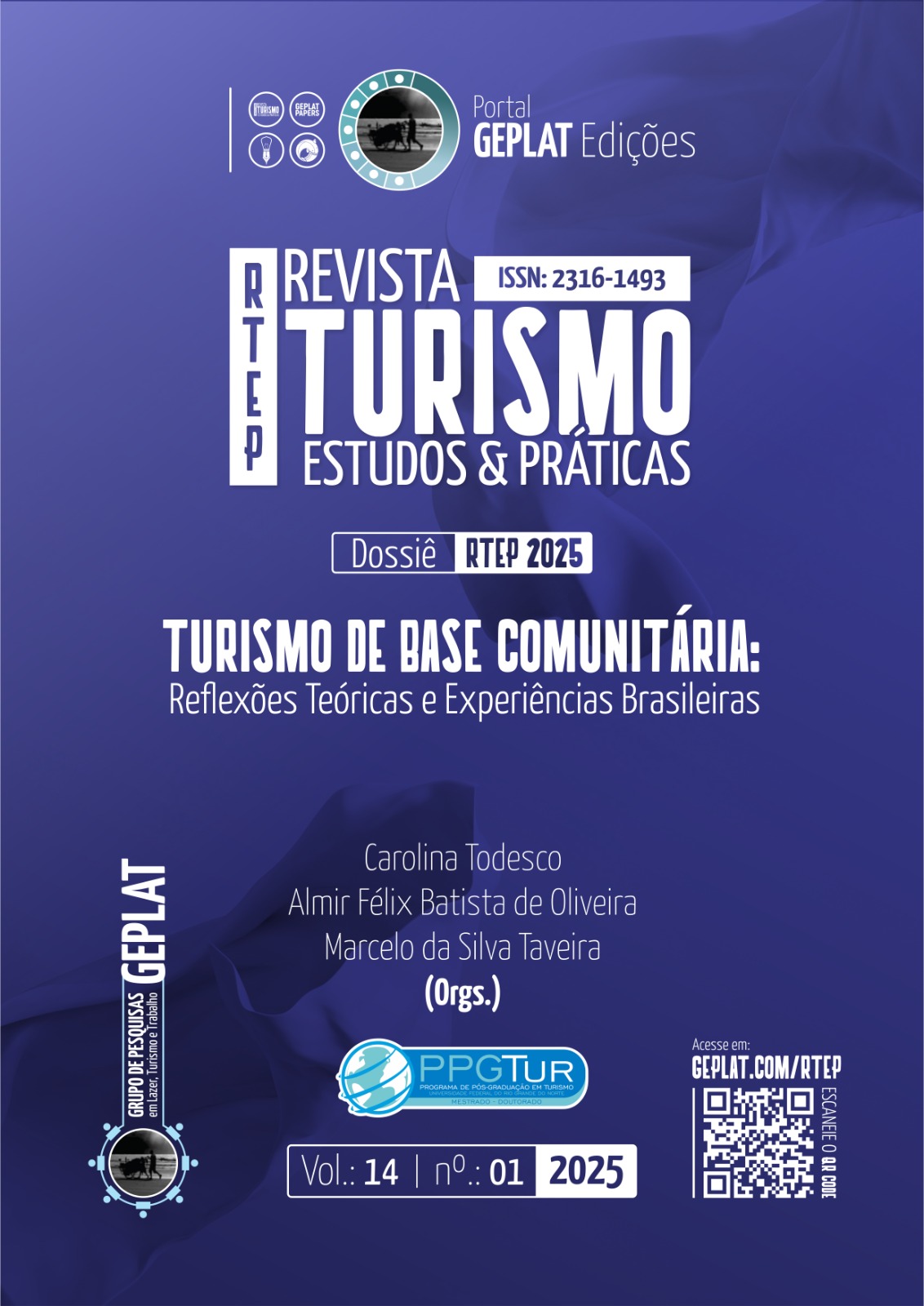YARIPO ECOTURISMO YANOMAMI: GESTÃO COMUNITÁRIA E ARTICULAÇÃO INTERINSTITUCIONAL NA VISITAÇÃO AO PICO DA NEBLINA (AM), BRASIL
YARIPO YANOMAMI ECOTOURISM: COMMUNITY MANAGEMENT AND INTERINSTITUTIONAL ARTICULATION IN THE VISIT TO PICO DA NEBLINA (AM), BRAZIL
Abstract
RESUMO: Este artigo apresenta os desafios do turismo indígena, o papel das parcerias e os caminhos encontrados para seu desenvolvimento na iniciativa denominada Yaripo Ecoturismo Yanomami, nos limites da Terra Indígena Yanomami, em Maturacá, município de Santa Isabel do Rio Negro, Amazonas, Brasil. Essa região também recebe a proteção de uma Unidade de Conservação de Proteção Integral, o Parque Nacional do Pico da Neblina ou Yaripo, para o povo Yanomami. Além do interesse em regularizar o turismo e de tomarem para si o protagonismo da visitação, conflitos com operadoras de turismo e com os militares estão na raiz desse movimento emancipador. Trata-se de um estudo de caso, com abordagem qualitativa, empírica, baseado em pesquisas bibliográfica e documental, e observação participante em reuniões diversas, assembleias, eventos e em momentos festivos ou não, entre março de 2022 e abril de 2024, no que se entende como uma versão indígena do Turismo de Base Comunitária (TBC). Essa etnicidade orientada para o turismo tem ênfase no planejamento, na gestão e no protagonismo das comunidades indígenas de Maturacá na visitação ao Yaripo, com o apoio de importantes atores sociais, governamentais e não governamentais, nesse processo, sendo a proteção do território, o fortalecimento da identidade, da cultura e de seu forte componente ancestral os propósitos do turismo indígena. Alguns desafios do turismo indígena no Yaripo são a comunicação com a coordenação do projeto devido à qualidade da internet na aldeia e as barreiras referentes à língua que limitam a negociação com estrangeiros; o papel dos atores sociais é relevante e de suporte à iniciativa, agregando diferentes discursos; e os caminhos encontrados avançam para pensar o turismo indígena para além de uma fonte de renda, mas no sentido de combater o garimpo ilegal e assegurar os modos de vida no território Yanomami. Palavras-chave: Gestão territorial; Gestão comunitária; Turismo de base comunitária indígena; Áreas protegidas; Yanomami; Pico da Neblina.
ABSTRACT: This article presents the challenges of indigenous tourism, the role of partnerships and the paths found for its development in the initiative called Yaripo Ecoturismo Yanomami, on the limits of the Yanomami Indigenous Land, in Maturacá, municipality of Santa Isabel do Rio Negro, Amazonas, Brazil. This region also receives the protection of an Integral Protection Conservation Unit, the Pico da Neblina (called Yaripo by the Yanomami) National Park. In addition to the interest in regularizing tourism and taking the leading role in visitation, conflicts with tour operators and the military are at the root of this emancipatory movement. This is a case study, with a qualitative, empirical approach, based on bibliographical and documentary research, and participant observation in meetings, assemblies, events and in festive or non-festive moments, between March 2022 and April 2024, in which It is understood as an indigenous version of Community-Based Tourism. This tourism-oriented ethnicity has an emphasis on planning, management and the leading role of Maturacá’s indigenous communities in Yaripo visiting, with the support of important social actors, governmental and non-governmental, in this process, with the protection of the territory, the identity, culture and its strong ancestral component the purposes of indigenous tourism. Some challenges of indigenous tourism are communication with project coordination due to the internet quality in the village and language barriers that limit negotiation with foreigners; the role of social actors is relevant and supportive of the initiative, bringing together different discourses; and the paths found advance towards thinking about indigenous tourism beyond just a source of income, but towards combating illegal mining and ensuring ways of life in the Yanomami territory. Keywords: Territorial management; Community management; Indigenous tourism; Protected areas; Yanomami; Pico da Neblina.


